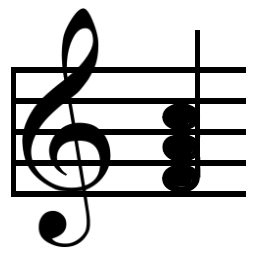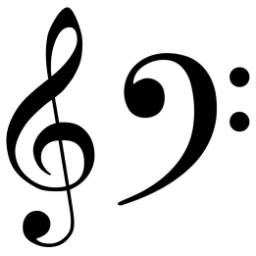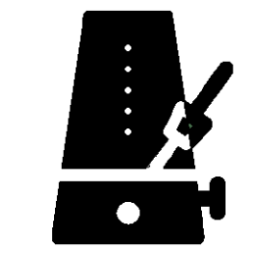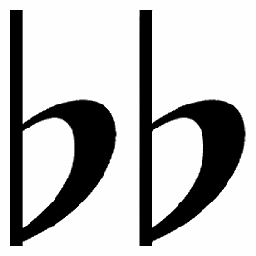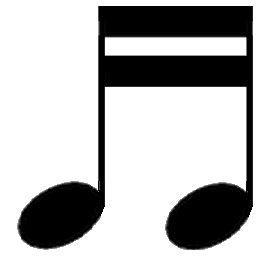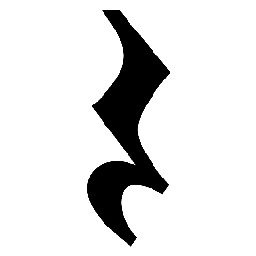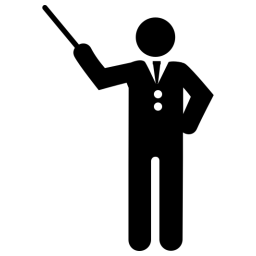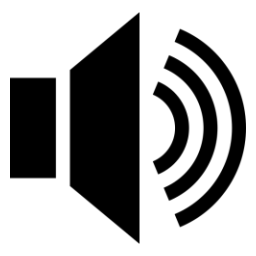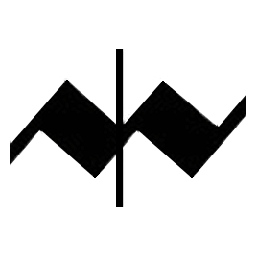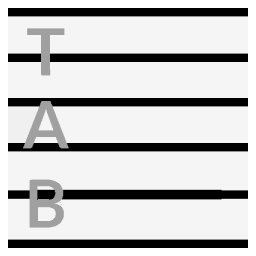A descriptive listing of the staves with illustrations. The musical staff is constructed of 5 horizontal lines separated by 4 spaces used for the placing of the symbols of musical notation of the major and minor scaling systems.
A descriptive listing of all Clefs including illustrations. A clef is placed at the beginning of the first measure of the staff indicating the pitch of the instrument for which the music is written.
The time signature, also called a meter signature, is placed after the clef and indicates the number of beats per measure by the top numeral while the bottom numeral indicates to which notes to apply that value. The example shown shows a meter of 4 beats per measure with the quarter note taking a full beat.
The key signature is placed after the time signature indicating the key or pitch range of the scaling system for the appropriate instrument with a series of sharp or flat signs. Depending upon the key, the signature could contain one or several sharp or flat symbols. See also Keys and Chords for key breakdown, assignment, and reference.
After learning the symbols to starting a new composition, we continue with the symbols that make up the actual music, notes. Notes are placed on the lines and spaces of the staff to tell the performer which tones to play, when to play them, and how long each one lasts. How long a note's sound will last depends upon several factors such as..
Next we continue with the symbols of silence, rests. Like notes, rests are placed on the lines and spaces of the staff to tell the performer when to remain silent and for how long. How long a rest will last depends upon several factors such as..
An illustrated descriptive listing of directional notation symbols used in musical composing and performance. A composer sometimes needs to instruct the performer how to properly interpret a composition so he uses certain directions to tell the performer how to play the piece.
Dynamics denote the relative intensity of sound & volume in a musical passage or composition. Dynamics are added by the composer as an embellishment to enable the performer to portray a more accurate sense of what the composer intends the composition should sound like. Dynamics are also relative meaning that its use is at the discretion of the performer
Ornamentation is the musical symbols instructing the performer to embellish or add to the actual written notes and instruction. Composers use ornamentation or style marks as a way of expressing themselves through the music by adding emotion.
Unlike the normal musical staff which has 5 lines and four spaces, in string tablature there is one line for each string of the instrument. Numbers used as notes indicate the fret board fingering positions. String tablature is not only used with guitars but also for other stringed instruments including banjo, bass, cello, mandolin, and violin.


